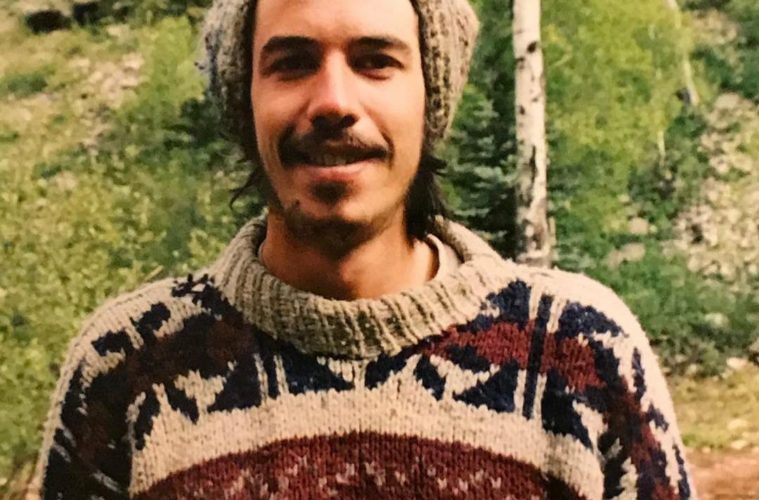The world of legal cannabis is getting better at recognizing its legends of the past. Among them is Mandelbrot, who had one of the biggest impacts on the industry before his untimely passing on the eve of legalization in 2015.
What made Mandelbrot, aka Ras Truth, a legend was not just the wild strains he successfully produced in the varying coastal climates of California but the scale at which he put it out into the community. And it wasn’t just his stuff he was putting out there. Most give him credit for widely distributing cuts like OG Kush in Sour Diesel up north for the first time after getting his hands on them in L.A.
We spoke with Mandelbrot’s brother, Ben Anderson, to hear about his tale from someone there for much of the ride.
“We were born in San Francisco, and our parents were liberal activist types,” Anderson told L.A. Weekly. “But my mom had family in Montana that needed her to be nearby. And so we moved to Montana and we all fucking hated it. It’s a beautiful place but it’s super conservative.
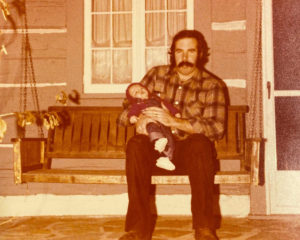
Mandelbrot with his dad.
At the age of 16, Mandelbrot got his GED and escaped back to California. He’d spend many years immersed in the Grateful Dead scene that’s wildly popular with cannabis entrepreneurs to this day. Ben, six years younger than his brother, would get to California in 2000. As a child, Mandelbrot’s dad had brought him to about a dozen dead shows and he had no problem jumping back in the scene solo and making contacts before his brother eventually arrived.
Their first season together would be in coastal Mendocino. The closer you get to the coast, the more challenges you would face from the amount of moisture in the air. Some strains would get powdery mildew while the popular purples of the era in the mid-to-late 2000s got bud rot. These factors would eventually be a big part of the breeding. The early cuts they would work with included the Southern Humboldt Purple Kush. Over the years they would get their hands on the OGs, sours and Topanga Canyon Pure Kush.
After another season in Mendocino, the brothers would head further north to Humboldt.
“And then we went up to Arcata for a while,” Anderson said. “We had a big indoor operation in Arcata for like 10 years up there. And then ended up coming back to Mendo again after that.”
One of the things that stands out about Mandelbrot was how ahead of the curve he was in so many areas, be it organic soil or thinking about the future of licensing. Similar to the wave of entities that emerged in 2016 ahead of legalization, Mandelbrot was getting his ducks in a row in 2010 for Prop 19. Election night didn’t work out in his favor in 2010, but he was ready.
“It’s interesting you know. My brother, he was like a visionary. He just knew how this was all gonna play out all on time before other people did. I don’t know how, but he was just way ahead of the times,” Anderson said.
A big part of the vision was a direct result of work effort. The genetics were the fruits of that labor. In an era where the feds were handing out mandatory minimums for over 99 plants, to have the work effort Mandelbrot did was another level of crazy some would argue.
“Well, it started kind of accidentally. What my brother did a lot back then was, he would start seed starts, and then sell them to local growers,” Anderson said. “He would just have a propagation nursery where you would grow seeds a foot tall and then sell them. And so we were just routinely like planting you know two or 3,000 seeds at a time.”
They wouldn’t always be able to move the massive inventory as it became available, but in the process of popping those seeds, they found many of Mandelbrot’s magical ingredients for the now famed catalog being kept alive by Anderson through Emerald Mountain Legacy where he distributes the genetics.
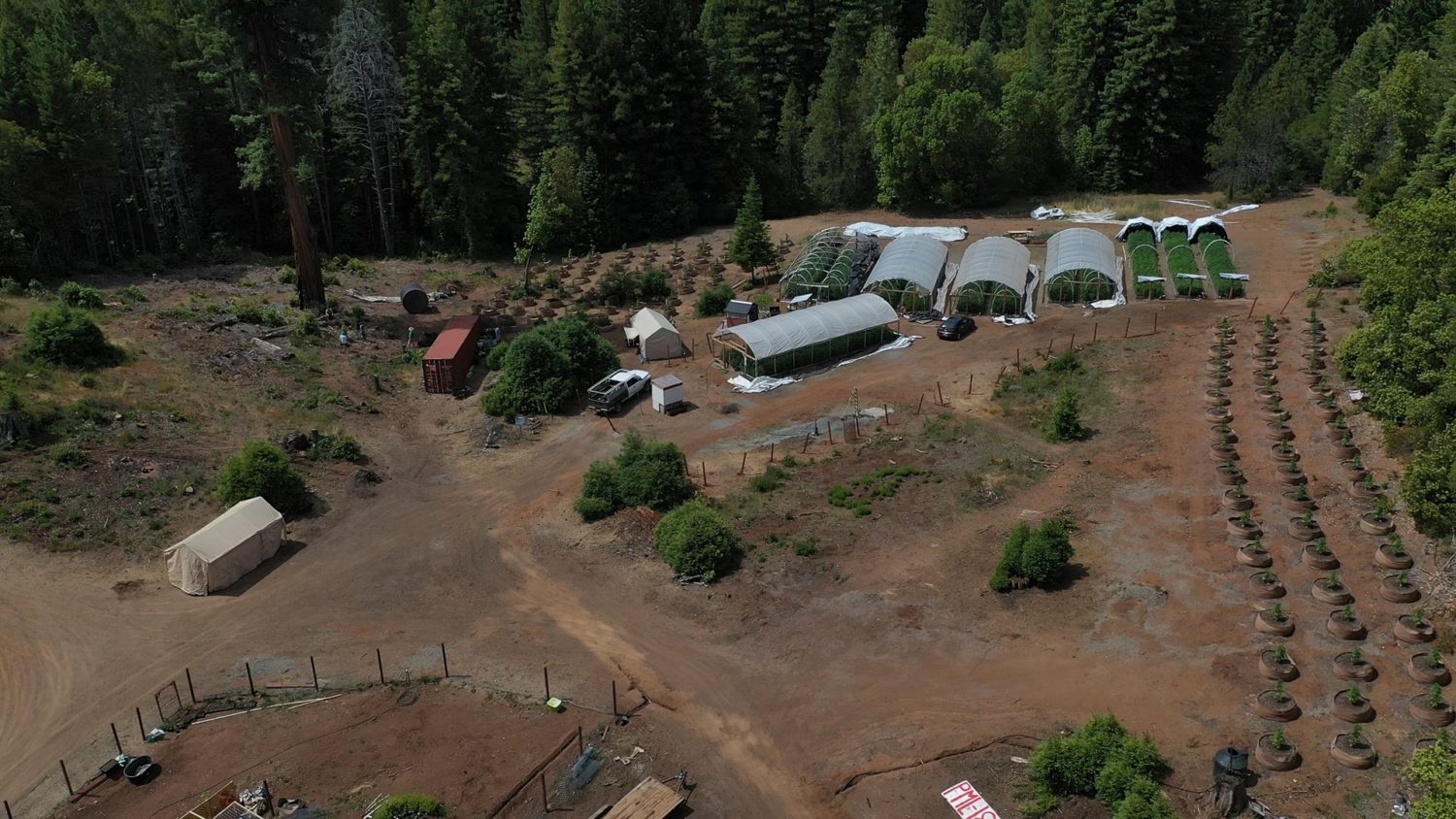
“My brother was nuts. He wasn’t afraid of the repercussions. He was crafty enough to get away with it a lot better than other people at the time,” Anderson said. “When we were doing those outdoors, those huge pheno hunts, we were in the pygmy forest.”
Anderson explained the cover of the forest was dense enough to keep the plants out of view from the helicopters attached to the numerous cannabis eradication taskforces of the 2000s. There was still enough sunlight to hunt through thousands of seeds. Some of the plants would need to go into late fall. When the brothers saw something that could survive the elements better than most they’d do what they had to do to preserve the genetics. 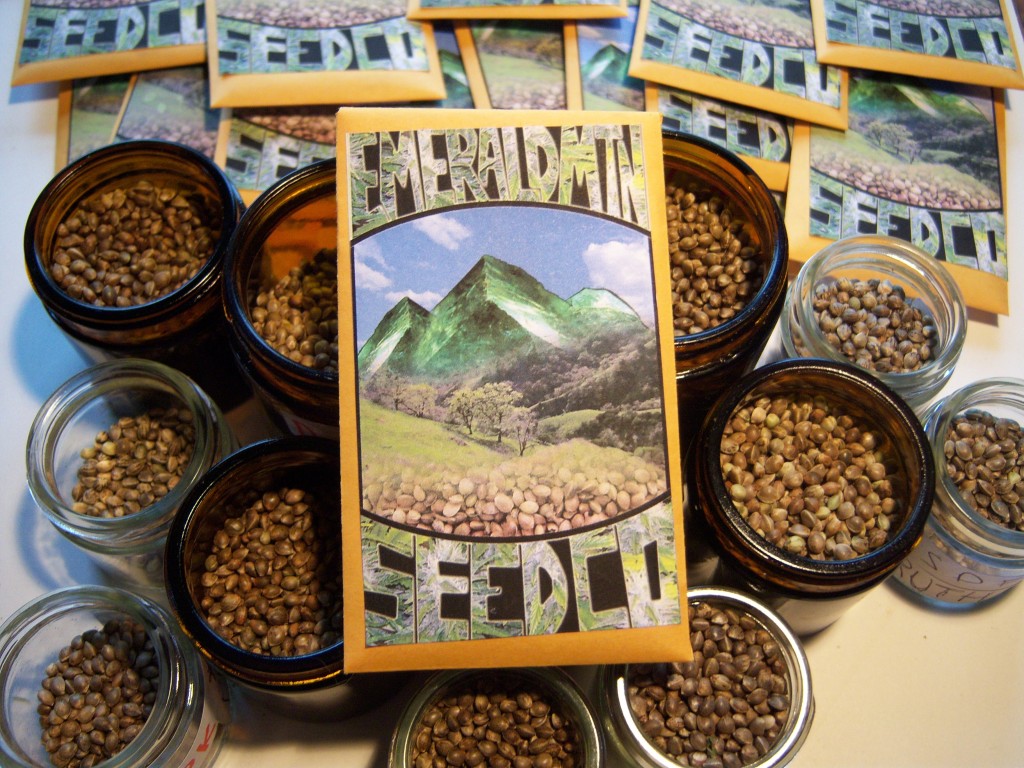
“We had been rained on and it was cold every night. They were still kicking ass,” Anderson said. “We’d be like ‘oh wow that plant can just go through anything and it will be fine.’ That’s how we found the parents that were so special for Royal Kush.”
The Highland Afghani that was used in the Royal Kush was one of those plants. Anderson thought it was ready to survive winter. He estimates his brother popped hundreds of thousands of seeds.
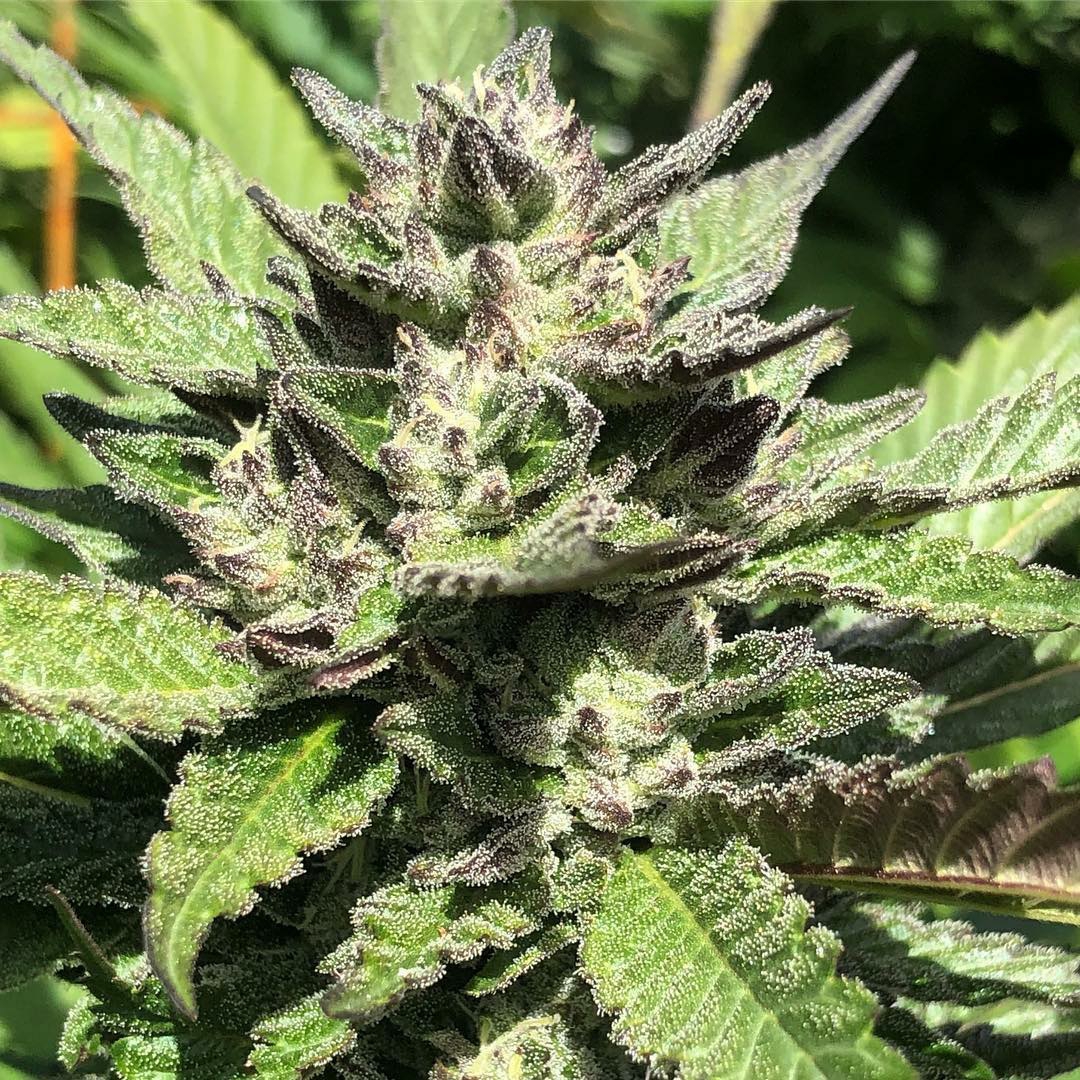
Royal Kush
We asked Anderson what he thought his brother would think about legal cannabis at the moment?
“He would be pissed right now for sure about the way things have all played out,” Anderson replied. “The reason he was such a renegade is that he was raised by activists and he felt the same way. He wanted to change the perception of cannabis and to make it mainstream. He was begrudgingly willing to go along with legalization.”
Anderson argued the current phase of things should be more appropriately called regulation than legalization, “Maybe it’s overregulated and less legal than it was under Prop. 215.”
Anderson likes to think the sense of community his brother inspired during a time when everyone was hoarding genetics will be his greatest legacy. But the cultivators in harsh climates who can grow pot because of his seeds might argue different.
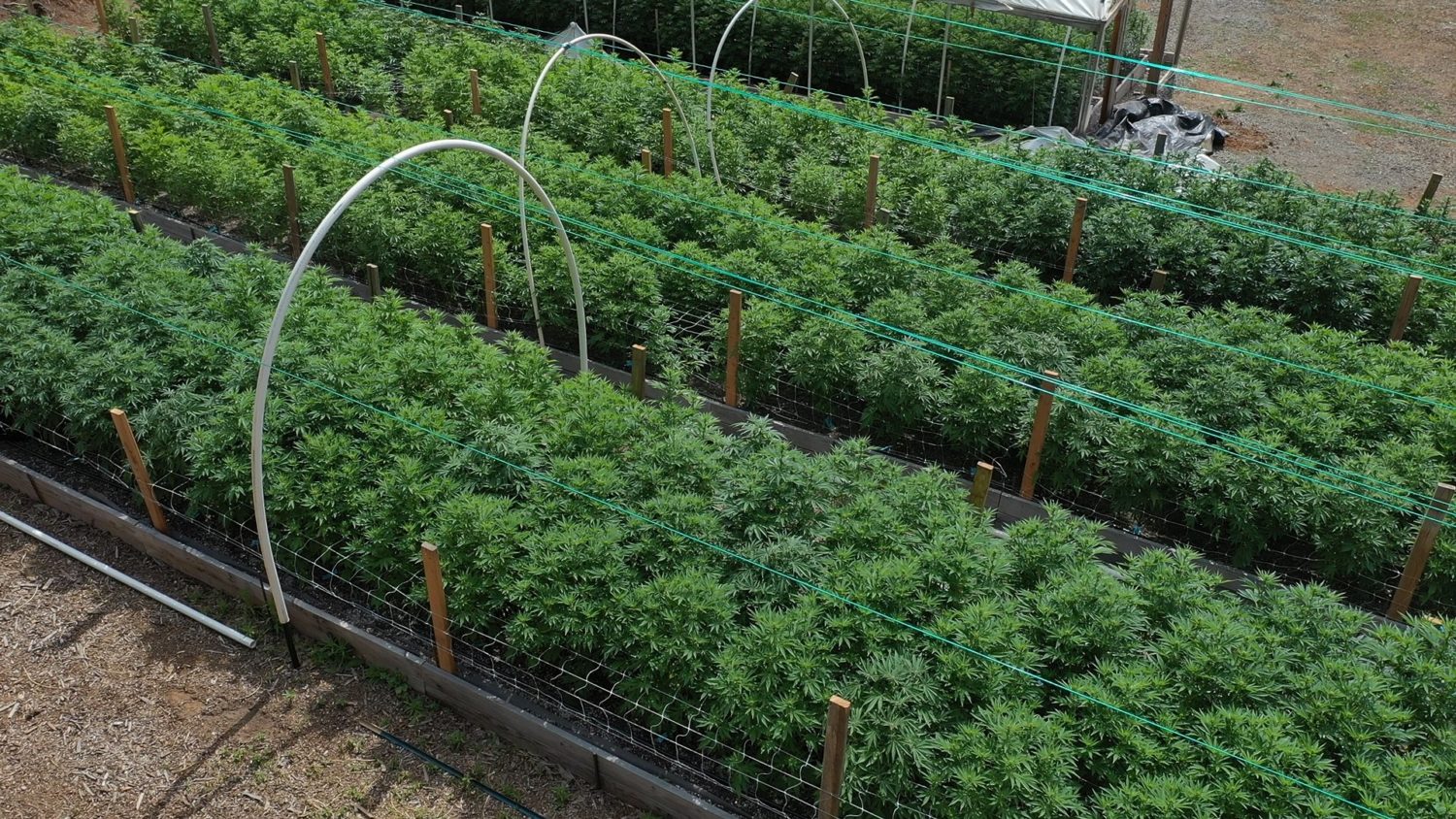
Emerald Cup Founder Tim Blake first met Mandelbrot at Blake’s Mendocino dispensary nearly a decade ago as he worked to get breeders to come out into the light. Royal Kush would end up winning the Emerald Cup’s final contest in Mendocino before its move to Wine Country to be more accessible. Blake believes others saw a lot of the credit for the victory.
“He didn’t want to come out and toot his own horn and work,” Blake told L.A. Weekly. “We had a number of conversations after that where I was really advocating for it. Because I’ve come out with the Emerald Cup. I’ve been in public all these years and Mandelbrot wouldn’t come out and do that.”
Blake said by the time Mandelbrot did make the decision to become a bit more public, nobody knew who he was. While at the same time, others were able to use his legacy to take off.
“And that was sad. Because Mandelbrot, by the time he really wanted to get credit and come out and be known, it had almost passed him by,” Blake said before noting the years they both spent as outlaws. “You’re not a social media monster. You’re not a person that toots your horn. You’re a quiet introverted farmer in the mountains.”
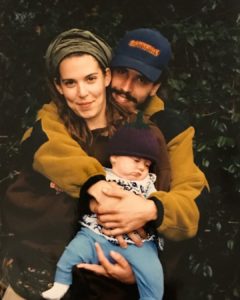
Mandelbrot with his family.
Breeder Shiloh Massive first met Mandelbrot in the mid-1990s. Massive was living in Oregon at that time and also a regular on the festival circuit.
“Reggae on the River Bob had Marley Avenue, it’s pretty much like the Shakedown street where you can get everything you need. And then somehow Brot was there, you know, and everyone kind of linked up at Reggae on the River to make connections, Massive told L.A. Weekly. “It was a different kind of era.”
Massive and Mandelbrot started talking about weed as Massive pulled out some nugs he bred. Naturally, they started talking about Mandelbrot’s love of the plant, his breeding of the plant. “And I’m like, wow. Because you know back then, not a lot of people were into that side of the thing, you know what I mean,” Massive said.
Eventually, Massive would move not too far from Mandelbrot in California and it would be a long-lasting friendship.
“Mandelbrot was a really intelligent dude, and he had a lot of retention,” Massive said. “So he’d remember a lot of stuff, he would take lots of notes, and sometimes the dude would never shut up. But that’s kind of good guy to be around,” Massive argued. “You just want to listen to someone. He was like on a different level of intelligence and inspired by what he was doing.”
Massive remember one occasion in particular that showed Mandelbrot’s dedication. “I remember I had Cambodian seeds that I collected or something like that. And they were like 22 weekers. They were just sitting in the collection. Like, right now I’m not growing to 22 weaker, but I gave them to Brot.” Mandelbrot would grow the seeds out the 22 weeks they needed. Mandelbrot found a strain with a one to one THC/CBD ratio.
Massive closed by noting one of the best words to describe Mandelbrot was compassion. He said he was glad to see his brother keeping the genetics alive.
Advertising disclosure: We may receive compensation for some of the links in our stories. Thank you for supporting LA Weekly and our advertisers.

